
What is web design, and how can it enhance your business while effectively communicating your key messages? In an era where online environments serve as the primary spaces for most modern consumers, nearly all businesses must provide a digital platform for their audiences. Creating an appealing and functional online space can significantly impact your bounce rate and influence how your brand is perceived in terms of authority.
Since the first website was launched then, web design and development have evolved at a rapid pace. In today’s digital world, having a well-designed website is vital for every business to prosper. Your website serves as the face of your brand, where customers learn about your business, connect with you, and explore your offerings. To make the process smoother, we’ve created a comprehensive guide to know about web design.
What is Web Design?
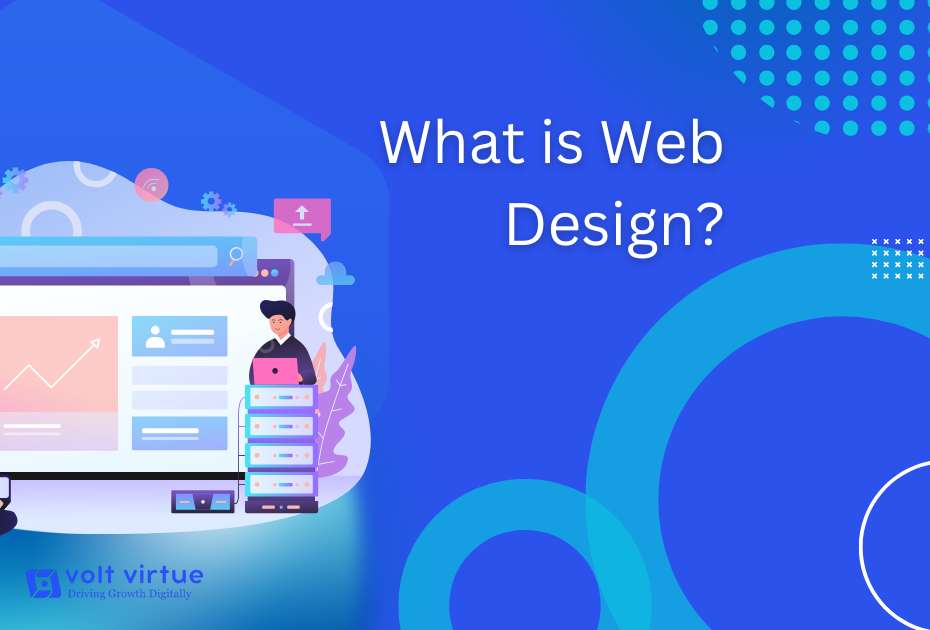
Web design is the art of organizing and presenting content on a website so it can be shared and accessed online. It blends aesthetics with functionality, determining a site’s appearance—including elements like colors, fonts, graphics, and the overall user interface.
A well-designed website is essential for creating an online presence in today’s digital world. As a result, web design continues to evolve, incorporating mobile apps and user interface design to meet the increasing demands of both website owners and visitors.
Web design is often a collaborative process that draws from various fields, such as web analytics, SEO, and user experience (UX) design. Web designers frequently work with professionals in these areas to enhance performance, ensuring that the design aligns with broader goals and delivers an optimal user experience.
Why is Web Design important?
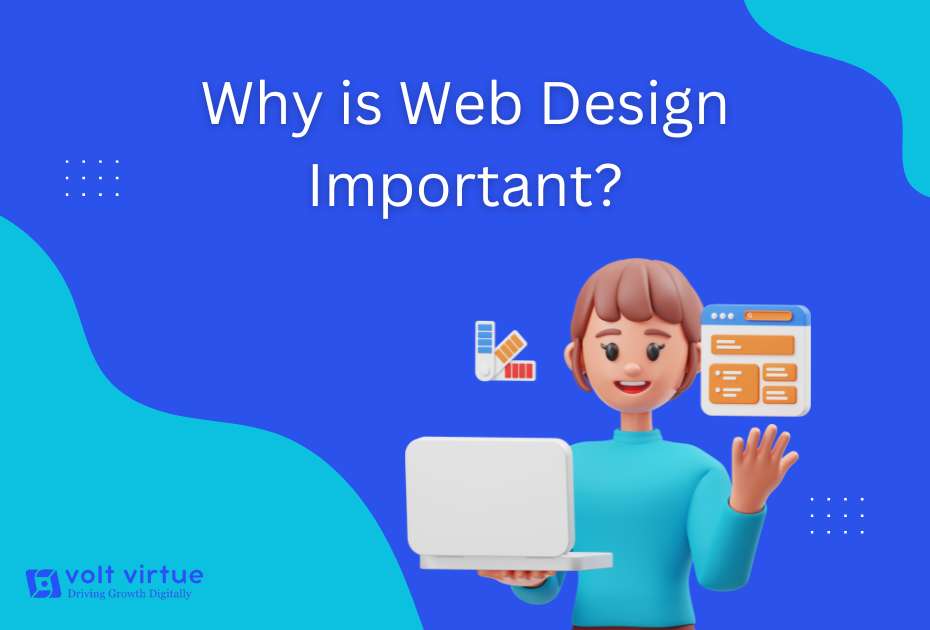
Always remember that you only get one chance to make an impression, and this is especially true when it comes to websites. The success of a website is largely dependent on its design, as it’s often the first interaction potential leads and customers have with your business. A well-crafted design immediately signals to visitors that they’ve found a site that aligns with their needs. A strong user experience also acts as a visual embodiment of your brand, leaving a lasting positive impression.
Web design plays a crucial role not only in user experience but also in search engine rankings. Skilled web designers consider factors like site speed—an essential element for climbing the search engine results pages (SERPs). Clear use of headlines, intuitive navigation, and elements that enhance readability also influence how search engines crawl and index a website’s content. Additionally, experienced designers incorporate important keywords into consistent site elements and navigation, further boosting search visibility.
What Does a Web Designer Do?

To construct websites that meet their unique needs and expectations, web designers collaborate extensively with their clients. They are in charge of making sure a website is visually appealing and stands out by overseeing its layout, design, and overall visual appearance. In addition to design, they may assist with testing, site setup, and content development before the site officially goes live. Simply put, web designers craft sites that captivate the target audience through visual elements and design tools, ensuring the design effectively reaches its intended audience. Their expertise in user interface (UI) design helps create intuitive, easy-to-navigate websites.
Aesthetics play a critical role in shaping users’ perceptions of a brand. Therefore, the reputation of a company is directly impacted by web designers. Research shows that users form opinions about a website in just a few seconds, and if the design fails to impress, it can harm the brand’s image. Web designers are instrumental in preventing this by ensuring the site leaves a positive first impression.
For aspiring web designers, a degree in graphic design or a related field is often required. Proficiency in CSS, HTML, and JavaScript is essential. By gaining web design skills through reputable institutions, designers can make a meaningful impact on businesses of all sizes—small, medium, and large.
Key Elements of Web Design

A well-designed website carefully considers both functionality and attractiveness. While aesthetics can attract visitors, they cannot compensate for poor functionality, and vice versa. To make a website truly stand out, web design encompasses two key elements: aesthetic (visual) and functional components. Both are equally important for creating an effective and engaging site.
Visual Elements
Visual elements set the tone for your website, making a strong first impression on visitors when executed well. It’s essential that these elements work together harmoniously rather than clashing. Key visual elements include:
- Fonts: Choosing legible and complementary fonts enhances readability and design.
- Colors: The color palette sets the mood of a website and greatly influences user perception and experience.
- Shapes: Using shapes strategically to guide the user’s attention.
- Layout: Organizing content in a way that is visually balanced and easy to navigate.
- Icons: Enhancing navigation and improving clarity through meaningful icons.
- Logos: Ensuring the logo is prominently displayed to reinforce brand identity.
- Images: Utilize high-quality images that are both relevant and captivating to enhance engagement.
- Videos: Using videos sparingly to add value without overwhelming users.
- Headers and Footers: These frame your content, providing crucial information and navigation options at the top and bottom of the page.
- Typography: The choice of font style and size enhances readability and plays a significant role in the site’s aesthetic appeal.
- Website Background: A well-chosen background helps unify the overall design and contributes to the website’s mood and style.
- Animation: When used effectively, animations can add depth and interactivity, making the website more dynamic.
- SEO: SEO enhances a website’s visibility on search engine results pages, helping it rank higher and attract more organic traffic.
- Content: The information presented on a site—whether text, audio, video, or interactive elements—should be relevant, valuable, and engaging for users, addressing their needs and interests.
Functional Elements
Functional elements are critical not only for improving user experience but also for optimizing how search engines rank your website. These elements directly impact usability and overall site performance. Some essential functional elements include:
- Navigation: Navigation makes it possible for users to quickly access the many areas of the website.
- User Interaction: Avoiding intrusive pop-ups, auto-play videos, and information overload to ensure users feel in control.
- Speed: Ensuring pages load quickly, ideally within a few seconds, to keep users engaged.
- Site Structure: The layout of the website should be straightforward and well-organized, making it simple to navigate for both people and search engines.
- Cross-Device Compatibility: Ensuring the site works seamlessly across various devices, including smartphones, tablets, and desktops.
Types of Web Designing
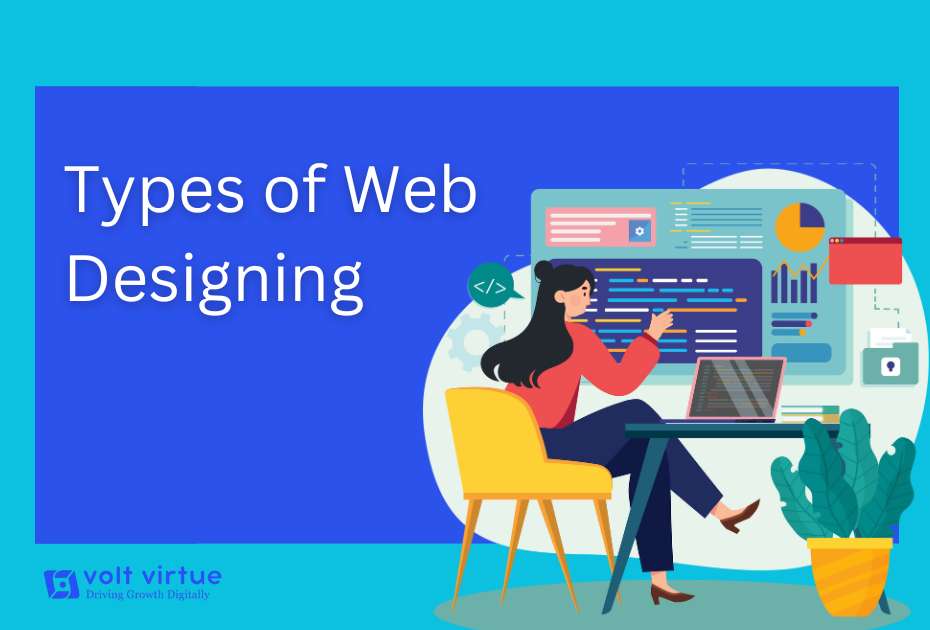
Web design must cater to both users and search engines, which have distinct requirements. The key is to balance these needs in a design that supports both. This is why many businesses turn to professional web design firms to enhance their online presence. There are three main types of web design, each with its own features and purposes. Choosing the right one can significantly improve a website’s effectiveness.
The three primary types of web design are Dynamic, Static, and E-Commerce. The decision is based on the project’s objectives and particular requirements.
1. Dynamic or CMS Website Design
Dynamic websites are ideal for delivering dynamic or interactive content. These designs are typically built using content management systems (CMS) like WordPress, Joomla, or Drupal. While they offer flexibility, they can be more complex to design and maintain.
- Drupal: An open-source CMS that developers and individuals use to build highly customizable websites.
- Joomla: A user-friendly CMS often used by large businesses and independent companies for its versatility.
- WordPress: The most popular CMS globally, offering a vast selection of themes and plugins. WordPress is accessible to both technical and non-technical users, making it a preferred choice for website development.
2. Static Web Design
Businesses that require a straightforward website with little updates can choose static websites. These designs are built using HTML, CSS, and JavaScript and are easy to create and manage. Because they are straightforward, they are also search engine friendly.. However, static websites are not suitable for complex features or frequent updates, as changes must be done manually.
3. E-Commerce Web Designing
The rise of e-commerce has made eCommerce web design indispensable for sales-oriented companies. An eCommerce design includes features like product listings, shopping carts, and payment gateways. Several platforms support eCommerce web design, including:
- WooCommerce: A popular plugin for WordPress that transforms a website into an online store.
- Shopify: A standalone platform that allows businesses to create fully functional online stores with ease.
- Magento: A robust eCommerce platform used by larger businesses for high-volume sales.
- Zencart and OsCommerce: Open-source platforms for building customizable online stores.
Due to the rising demand for eCommerce, professionals interested in web design can take courses on platforms like Shopify to quickly gain the skills needed to thrive in this market.
Ways to Approach Web Design
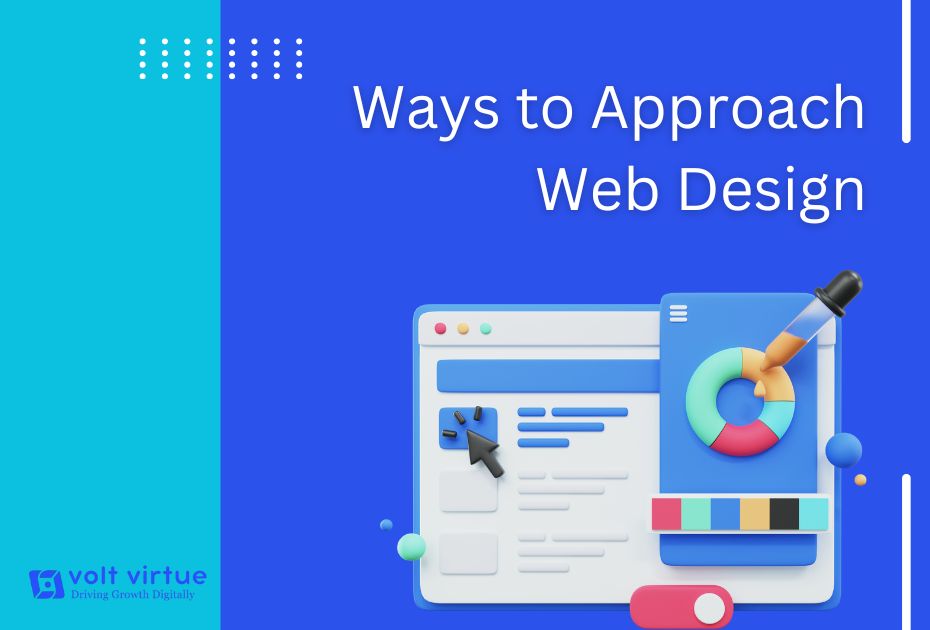
As a web designer, making an informed choice about your design approach is crucial. This understanding enables designers to plan and implement projects with clear purpose, objectives, and outcomes. Given the diversity and prevalence of smartphones, it’s essential to design websites that cater to a variety of screen sizes, from large monitors to small smartwatches. Therefore, there are different approaches to effectively bridge this gap.
Essentially, there are two primary methods for designing websites: Adaptive and Responsive.
1. Adaptive Approach
The adaptive approach focuses on maintaining brand consistency and functionality across a range of screen sizes, including both mobile and desktop devices. This method does not require separate designs or banners for different platforms; instead, the site automatically adjusts its layout and content for each device. There are set layout sizes in the adaptive method.
When a website detects the available screen space, it selects the most suitable layout for that specific screen. As a result, when a user opens the site on a computer, the optimal layout is displayed for that screen size, without compromising design integrity. Many companies have swiftly adopted this approach, including industry leaders like Apple and Amazon.
2. Responsive Approach
In contrast, the responsive approach is designed with mobile users in mind. It enhances user experience by automatically adjusting styles and content to fit any device, whether it’s a mobile phone or a computer. The responsive approach tailors content based on the browser’s available space.
When a user opens a website on their computer and then resizes the window, the content dynamically reshapes itself to provide the best possible layout. On smartphones, this adjustment occurs automatically. The website assesses the available space and presents its content accordingly. This approach is valued for its fluidity, granting users seamless access to the internet and its advantages.
While each web design method has its strengths and weaknesses, designers should select the approach that best aligns with their project’s goals. If you’re still uncertain about which approach to choose, enrolling in an online web design course can provide valuable clarity.
The Web Designing Process

Designing a website follows a specific process, much like any other project. While web design is complex, following a step-by-step guide can make it more manageable. Although there isn’t a single, definitive approach, most successful web design processes include a well-structured and comprehensive series of steps. If you’re not a designer, you can learn the following process in a dedicated web design course.
1. Strategy & Planning
Creating or redesigning a website requires a solid strategic foundation. Whether you have a marketing strategy or not, you need to approach web design with clear goals. Effective planning ensures that each element of your website serves a purpose, working towards your overall business objectives. Skipping this phase can result in a website with unrealized potential and poor ROI.
Key steps within the planning phase include:
- Web Plan: This is the blueprint for your site, outlining its purpose, key objectives, target audience, competitors, sitemap, and information architecture.
- Key Objectives: Define these at the outset to guide decision-making throughout the design process.
- Target Audience: Create audience personas to comprehend the requirements and inclinations of your prospective client.
- Competitors: Examine your competitors’ websites to set yourself apart from the crowd and attract the people you want to reach.
- Sitemap & Information Architecture: Organize your site’s pages and assign content to each page to ensure smooth user navigation.
2. User Experience (UX)
User experience, or UX, is the foundation of web design. It encompasses the overall experience users have as they interact with your website, including their perceptions, feelings, and reactions. From planning to final design, every stage of the process should keep the user in mind. A strong UX ensures that your site is intuitive, engaging, and easy to navigate.
3. Wireframing/Prototyping
Wireframes serve as the blueprints of your website, mapping out where content elements, headlines, and images will be placed. After wireframing, a clickable prototype is created to simulate user flow and navigation. This phase is crucial for visualizing how users will interact with your site and identifying any potential issues with layout or usability before full development begins.
4. Copywriting and Section Planning
Good content is essential to any successful website. During this phase, copywriters create compelling, concise text that resonates with your audience and helps boost your site’s SEO. Once the content is written, designers plan where each section of content will be placed on the website, ensuring the layout is visually appealing and easy to navigate. Proper section planning is crucial for maintaining a professional look and feel.
5. Design
Once wireframes and content are ready, the design process begins. Designers create visual elements, establish a consistent style, and refine the user interface (UI). This phase includes developing detailed UI components, such as menus, buttons, and logos, and ensuring that all visuals contribute to a cohesive user experience. Feedback from stakeholders is incorporated to ensure the design meets both aesthetic and functional goals.
6. Development
Coding the website in accordance with the design standards is part of the development process. This can be a complex process, involving multiple revisions and testing to ensure everything works smoothly. Developers collaborate with designers to bring the website to life, ensuring that the final product exceeds client expectations.
7. Quality Assurance (QA) Testing
Before launching the website, thorough testing is essential. The QA team checks for errors in text, images, code, and functionality. This includes testing load times, conducting A/B testing, and identifying any issues that could affect the user experience. Any necessary changes or corrections are made during this phase to ensure a flawless launch.
8. Improvements and Iteration
Even after the website goes live, the design and development teams must remain involved. Regular updates and improvements keep the website fresh and relevant, ensuring it continues to meet client expectations and respond to user feedback. Continuous iteration allows for ongoing refinement based on performance data and client input.
9. Maintenance
Just like maintaining a home, a website requires ongoing care to stay functional and visually appealing. Regular maintenance helps preserve the site’s performance and rankings, ensuring it remains competitive and user-friendly. This includes monitoring security, fixing bugs, updating content, and ensuring the website adapts to evolving technologies.
Web Design Tools
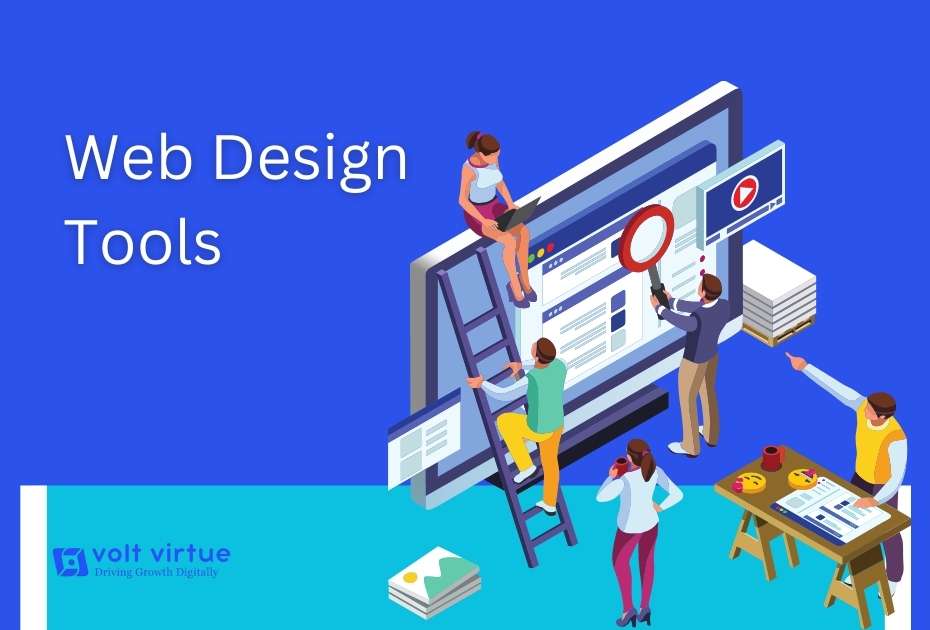
The creative process may be transformed and made more productive and pleasurable with the correct tools. For web designers, having access to top-tier tools can streamline the design process and elevate the quality of their work. While there are numerous web design tools available online, only a select few consistently deliver the best results. Mastering these tools can also enhance your employability in the web design industry. Let’s dive deeper into some of the most essential tools used by web designers
HTML and CSS
The coding language, HyperText Markup Language (HTML), is used to build websites at the front end. The codes are written to form the structure of a web page, which is then rendered by web browsers into the websites visitors see online. Cascading Style Sheets (CSS) is a design language that contains all relevant information related to the display of web pages. CSS works hand in hand with HTML to define the formatting and style of a webpage or website, including fonts, layout, and padding.
Photoshop
One of the most important and frequently used tools for designers is Photoshop. It’s an essential tool for every web designer, offering a wide range of gradients and color combinations that allow for the creation of stunning visuals and patterns throughout a project. Photoshop requires proper training, and by learning it through a reliable web design course or tutorial, designers can quickly produce eye-catching and professional designs.
Adobe Dreamweaver
Dreamweaver is another essential tool from Adobe for web design. This HTML editor is compatible with JavaScript, CSS, and other things. Dreamweaver allows you to design visually or work directly in code, making it a great option for both beginners and experienced web designers.
Sketch
Sketch is a set of tools for web design made especially for macOS. It is ideal for creating interfaces, websites, and icons. Sketch offers precision and flexibility, featuring tools like Symbols and Shared Styles that make reusing elements quick and easy.
Figma
Figma is a web-based tool that enhances online design with features like asset libraries, shared prototyping, and auto layout. As a multi-user online design program, Figma is a must-have in any designer’s toolkit for facilitating teamwork and enabling real-time client feedback.
Canva
Canva has gained popularity for its drag-and-drop layouts and user-friendly interface. This program allows designers to create images quickly using optimal, pre-established templates. They may create aesthetically appealing material by experimenting with themes, colors, and photographs with Canva. This tool is highly recommended for creating graphics for the web or social media.
These are just a few tools that web designers commonly use and are known for their quality worldwide. If someone wants to learn more about web design and its tools, an excellent web design course can provide deeper insights into the processes involved.
The Principles of Web Design

Web design is a complex process that involves much more than just creating visually appealing pages. An effective design not only conveys the message clearly but also ensures functional performance while engaging visitors. By following certain principles, designers can build trust in a brand and enhance the user experience. Here are some essential points to consider before starting any web design project:
- Information Architecture (IA)
Information Architecture helps web designers organize the data that will be presented to visitors, focusing on menus and navigation. IA revolves around user expectations, ensuring that the layout is intuitive and user-friendly. A well-structured IA leads to an efficient browsing experience. - Navigation
Effective navigation is crucial for a successful website. It allows users to easily move between different sections, and it should be simple, clear, and easily accessible. Good navigation prioritizes the user, ensuring a seamless journey across multiple pages. Tips include:
- Prioritize user needs
- Include a search function
- Optimize scrolling
- Use breadcrumbs to guide users
- Link pages logically
- Page Structure
A well-organized page structure enhances the user interface and experience. Using a grid-based layout helps separate and organize elements clearly, making navigation easier. Familiar, logical structures lead to better user engagement and a smoother browsing experience. Designers can explore tools like the Paragraph and Layout Builder Modules in Drupal for structured layouts. - Visual Hierarchy
Visual hierarchy refers to the arrangement of elements based on importance. Designers must prioritize which features stand out by adjusting size, color, and placement. Understanding natural browsing behaviors, such as the Z-shaped or F-shaped scanning patterns, allows for more effective design layouts, ensuring that the most critical information is highlighted. - Content
The content on a website should clearly communicate the business’s goals while being easy to read. Web designers should follow these key rules:
- Use concise language
- Avoid overly technical jargon
- Keep sentences short and straightforward
- Media
Images, videos, GIFs, and animations enhance the user experience and make the website more engaging. These visual elements leave a lasting impression on visitors, making content more appealing and reducing bounce rates. A well-balanced mix of media keeps users engaged and interested. - Consistency
Consistency ensures a smooth user experience from start to finish. Designers should maintain uniformity in layout, colors, fonts, and visuals across all website sections. This also extends to marketing strategies and ensures that the website feels cohesive, regardless of where the user navigates. - Contrast
Using contrast effectively improves readability and guides user attention to important elements. Employing different fonts, colors, and graphics in contrast with one another can make key features more visible and encourage deeper interaction with the website. - White Space
The proper use of white space gives a website a clean, professional appearance. By leaving intentional blank spaces between text blocks, images, and other elements, the design feels less cluttered and easier to navigate.
What To Consider When Designing a Website?
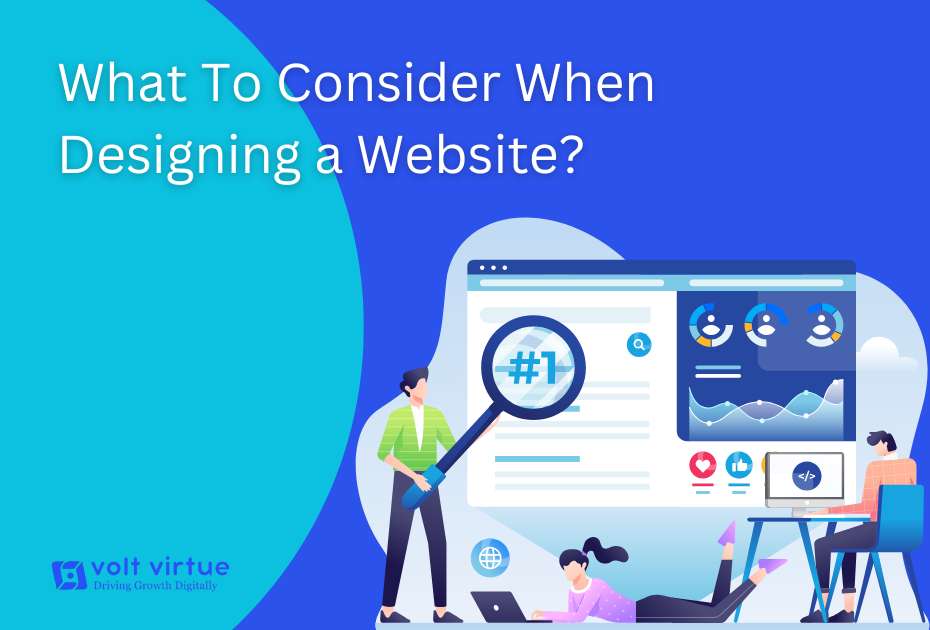
Web design plays a critical role in shaping the online presence of a business. On the other hand, bad design decisions might harm your brand as a whole. To ensure a high-quality website, certain key factors must be taken into account. Here are the most important ones:
- Aesthetics
Aesthetics are often the first thing people associate with web design, but they are only one piece of the puzzle. Your website’s design should reflect your brand’s identity by incorporating its colors, styles, and overall vibe. However, avoid overloading the design with too many elements, as this can hinder user experience. Keep it visually appealing but balanced. - Usability
Your website must be designed with real users in mind, which means prioritizing usability. A user-friendly website caters to visitors from diverse backgrounds and technical abilities. Keeping things simple is essential; simplify menus, settings, and layouts to improve navigation. Always think from the perspective of the user: what would they find easy to use? - Content Quality
A beautiful design and smooth navigation are meaningless without quality content. Visitors come to your site looking for valuable information, so providing relevant, high-quality content is essential. Many businesses leverage Content Marketing to ensure their website consistently offers insightful, engaging content that meets user needs. - Speed
Page speed can make or break your website’s success. Studies show that if a page takes longer than 3 seconds to load, bounce rates can increase by 38%. User engagement and conversion are negatively impacted by this. Effective web design should balance visual elements and functionality without slowing down the site. Optimizing images, using efficient code, and leveraging caching are key strategies to improve speed. - Mobile-Friendliness
With mobile devices accounting for over 50% of global web traffic, ensuring your website is mobile-friendly is essential. A responsive design adapts seamlessly to different screen sizes, providing a consistent experience across smartphones, tablets, and desktops. This is crucial for retaining a large portion of your audience and ensuring accessibility on all platforms.
What Are The Worst Web Design Mistakes?
Web design plays a crucial role in your digital marketing strategy, ensuring that your brand is well-represented and providing a quality experience for your target audience. Before diving into your web design, it’s essential to understand the common mistakes to avoid. Keeping these pitfalls in mind can save you from needing to make corrections after your site goes live.
Here are key web design mistakes you should avoid:
1. Failing to Consider Your Target Audience
Even the most visually stunning websites can fall flat if they don’t resonate with the intended audience. It’s vital that your website speaks directly to your ideal customers, as their experiences will drive interaction, satisfaction, and sales.
Neglecting to design with your target audience in mind can significantly reduce your brand’s ability to attract quality visitors likely to convert. For instance, car manufacturers like Subaru and Audi effectively cater to their specific segments by aligning their web content and design with their target markets.
2. Inconsistent Visuals Across Channels
A common error brands make is failing to maintain visual consistency across their various marketing channels. This inconsistency can stem from a lack of a brand style guide or not fully establishing a brand personality before creating a design.
Consistency in visuals is essential for making your brand instantly recognizable. Whether on your website or social media, cohesive designs showcase your brand’s personality and create a unified presence. Your website should serve as the hub of your brand, from which all other marketing efforts branch out.
3. Excessive Elements
Overcrowding your web design with too many elements can distract users and dilute your brand’s digital presence. An overwhelming design can drive visitors away before they engage with your brand, products, or services.
While creativity is important, clarity and readability are key to enhancing user experience. Strive for a clean design that effectively communicates your message without unnecessary distractions.
4. Lacking a Clear Call-to-Action (CTA)
One of the most detrimental mistakes in web design is failing to provide a clear call-to-action (CTA). A CTA informs visitors of the next step you want them to take, guiding them further along their buyer’s journey.
Without a clear CTA, potential customers may be unsure of how to proceed, resulting in fewer conversions and sales. Ensure your CTAs are straightforward and concise, such as “Click here to learn more” or “Order Now,” accompanied by information explaining what the user can expect when they take that action.
5. Failing to Document Web Design Decisions for Future Use
It’s crucial to document your design decisions throughout the web design process. This documentation will prove invaluable when you need to make future changes but can’t remember the rationale behind earlier choices.
For example, you might have evaluated your target audience and brand personality before selecting certain design elements. Without a record of these decisions, you risk cluttering your site with inconsistent changes or wasting time trying to recreate the site from scratch.
Frequently Asked Questions About the Web Design
1. What are 3 types of web design?
Answer: Static, dynamic, and eCommerce web design are the three most popular categories of web design.
2. What are the benefits of web design?
Answer: The benefits of web design include creating a strong first impression, improving user experience, supporting SEO strategies, building brand consistency, enhancing site navigation, and fostering stronger relationships between businesses and their customers. Good web design also increases mobile traffic, reduces bounce rates, and ultimately drives higher conversion rates.
3. Is web design still needed?
Answer: Absolutely, web design remains essential. A well-designed website serves as the digital face of a business or brand, enhancing visibility, improving user experience, and driving growth. Moreover, effective web design plays a crucial role in search engine optimization (SEO) strategies, making it vital for achieving online success.
4. Is web designing a good career choice?
Answer: Yes, web designing is a promising career choice. As more businesses transition online, well-designed websites are in high demand. This growing need for professional web designers makes it a lucrative and sustainable career path.
5. Is web design hard to study?
Answer: While web design requires learning technical skills, it’s not difficult if you have a passion for it. With dedication and the right resources, web design can be enjoyable to study and master.
